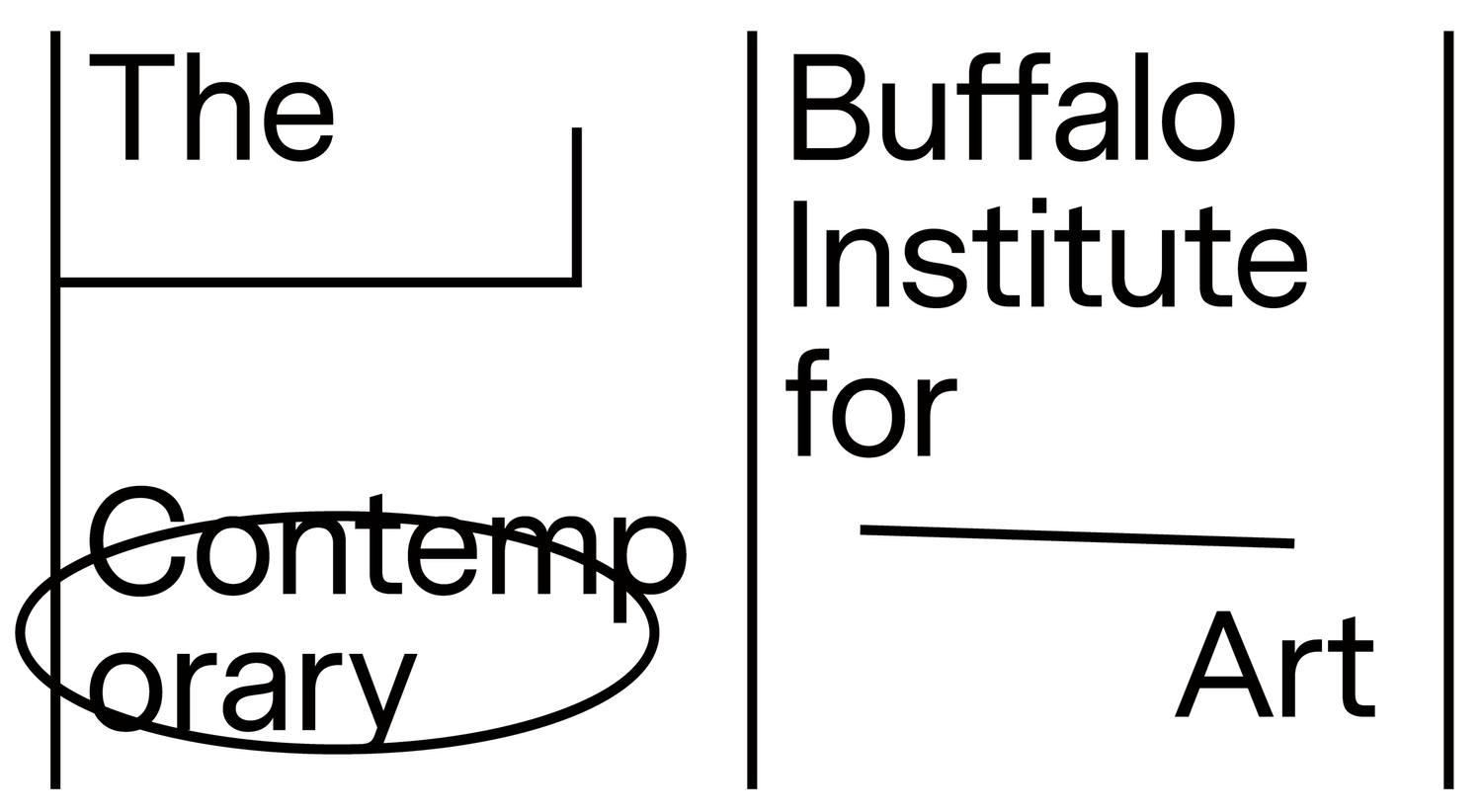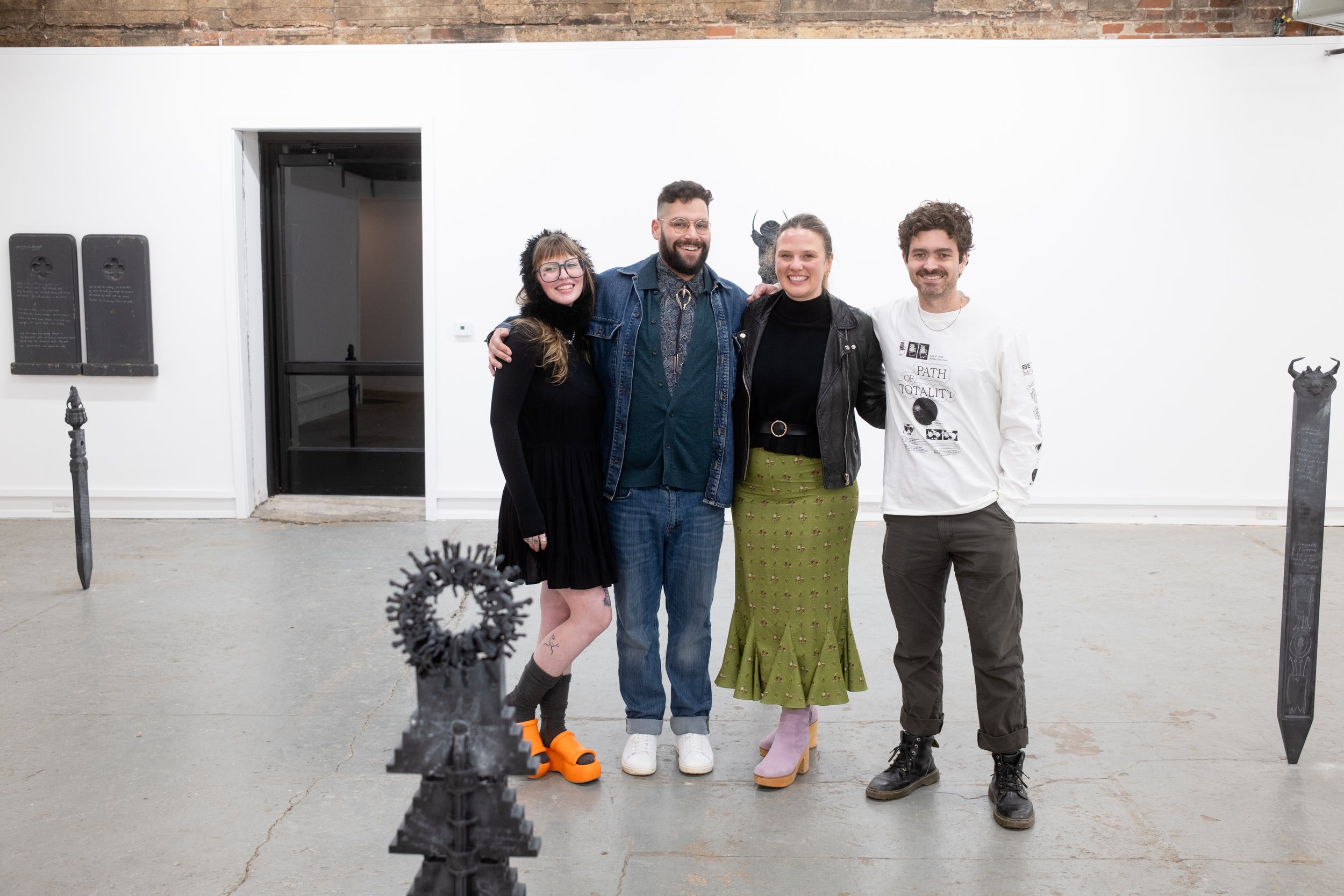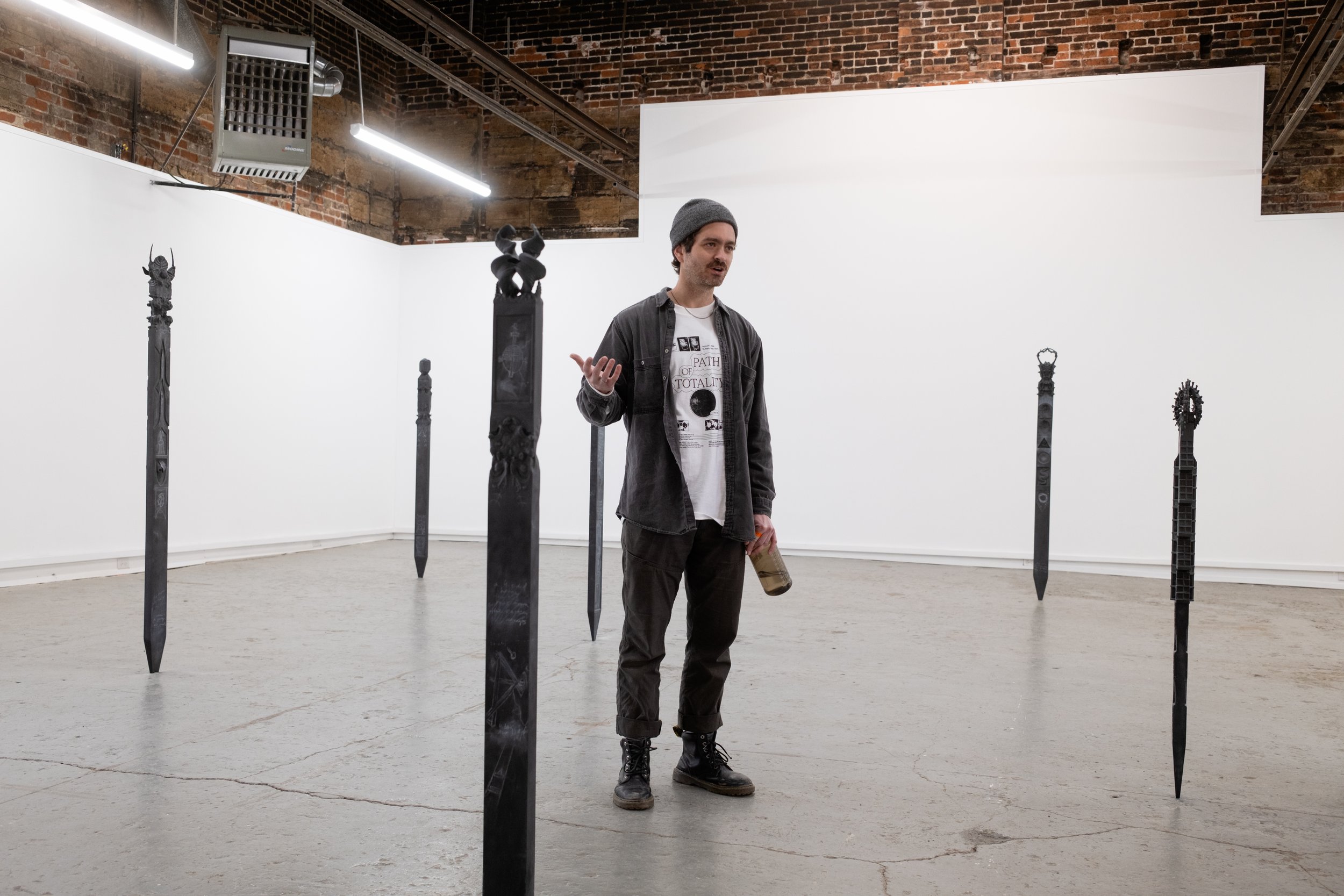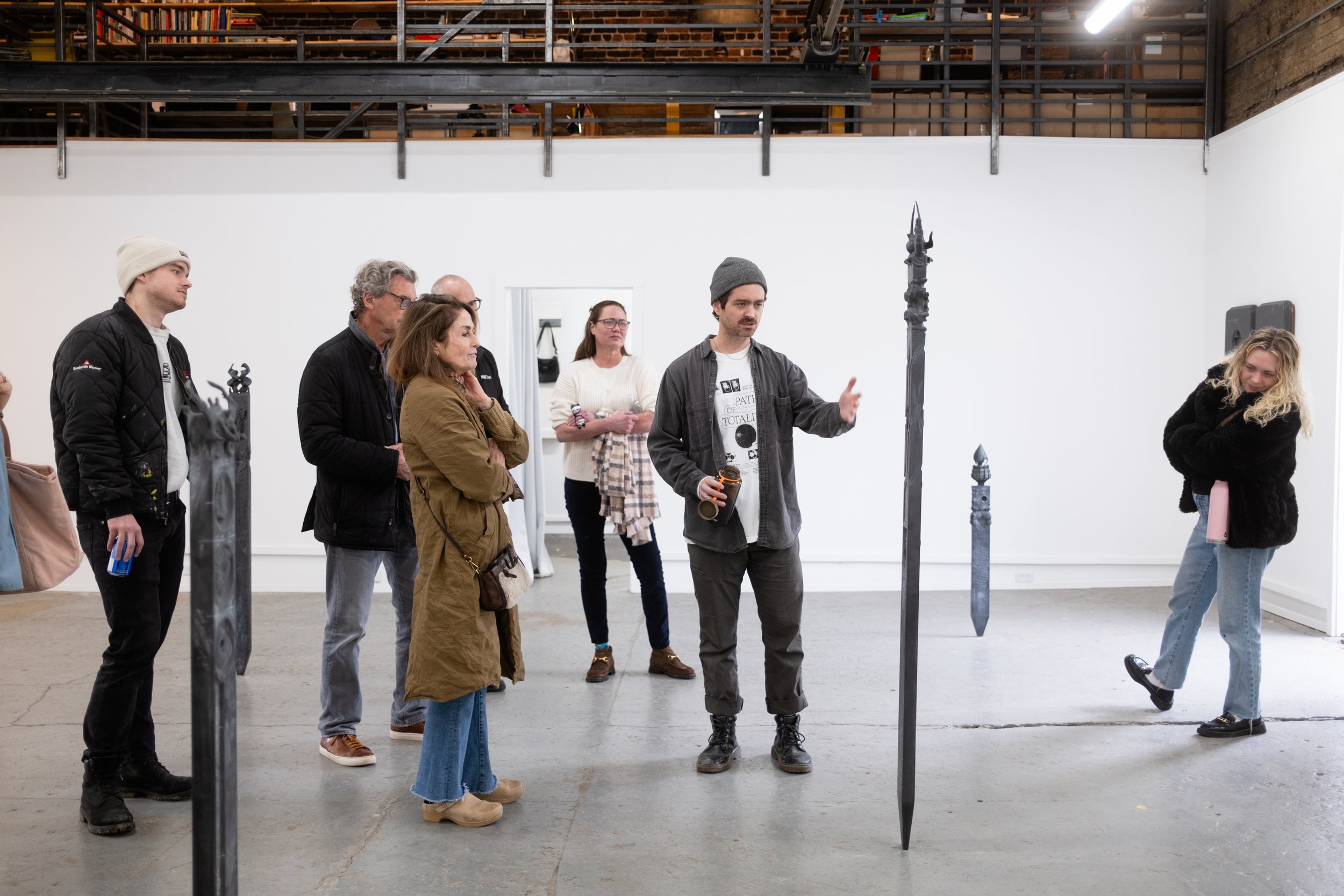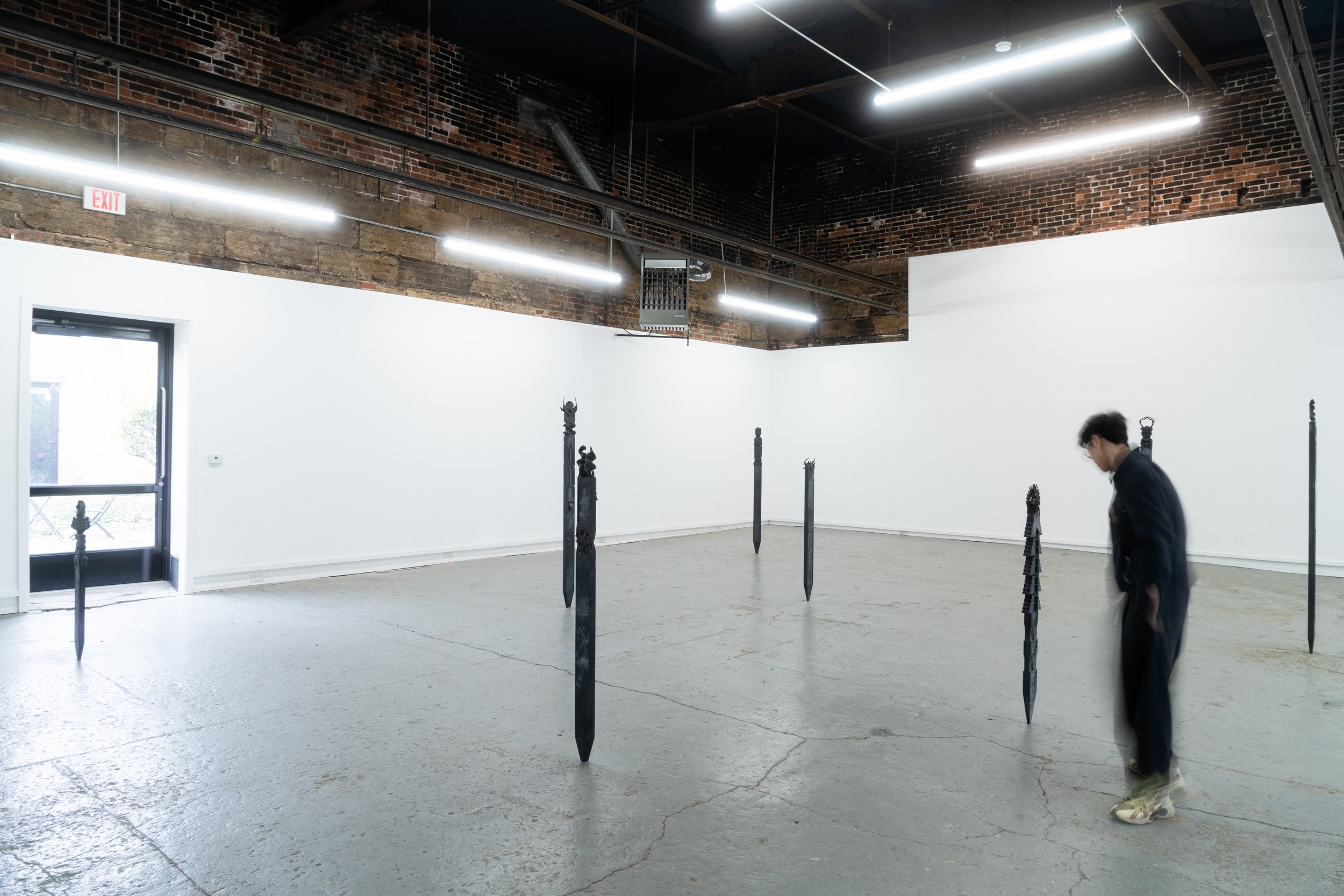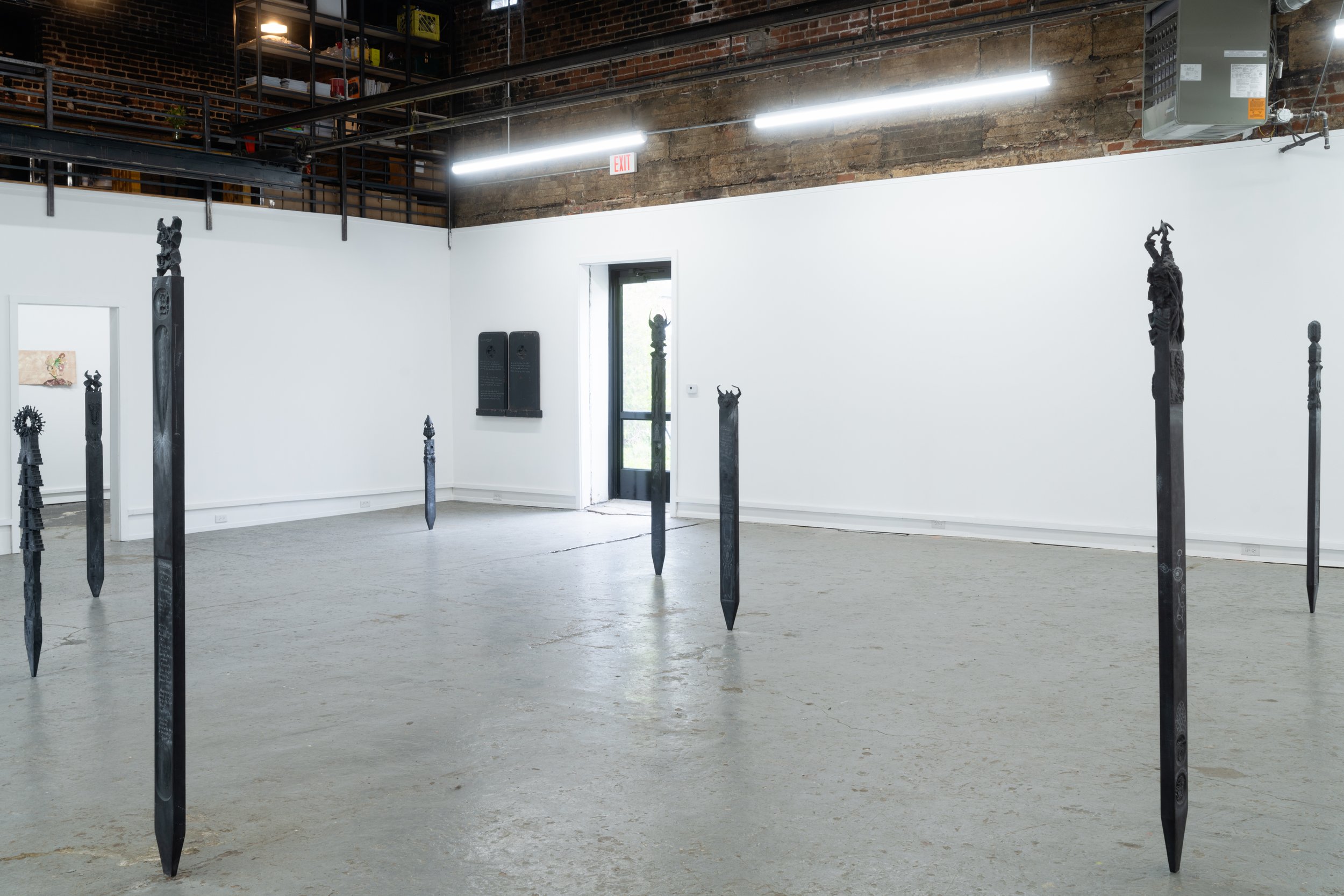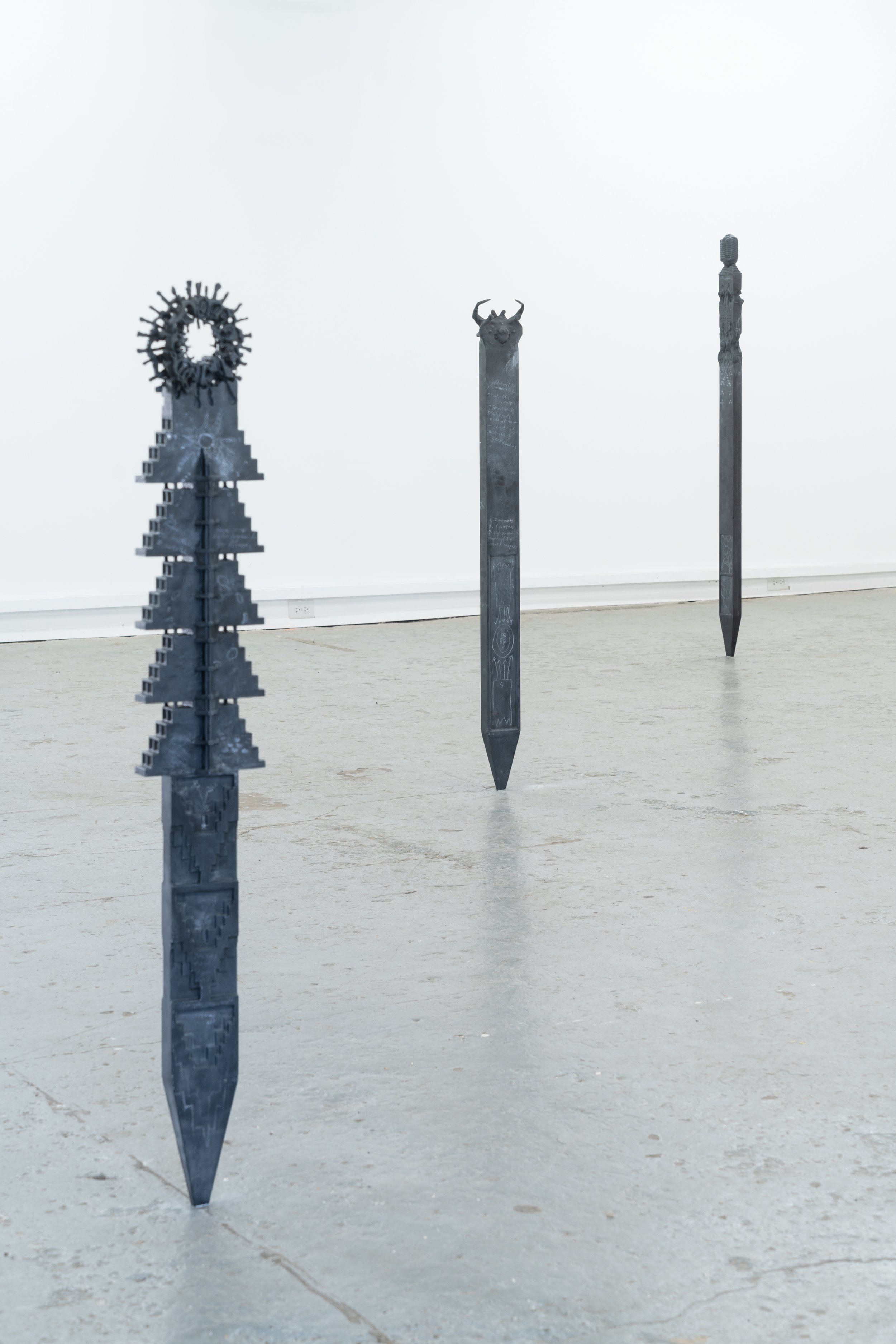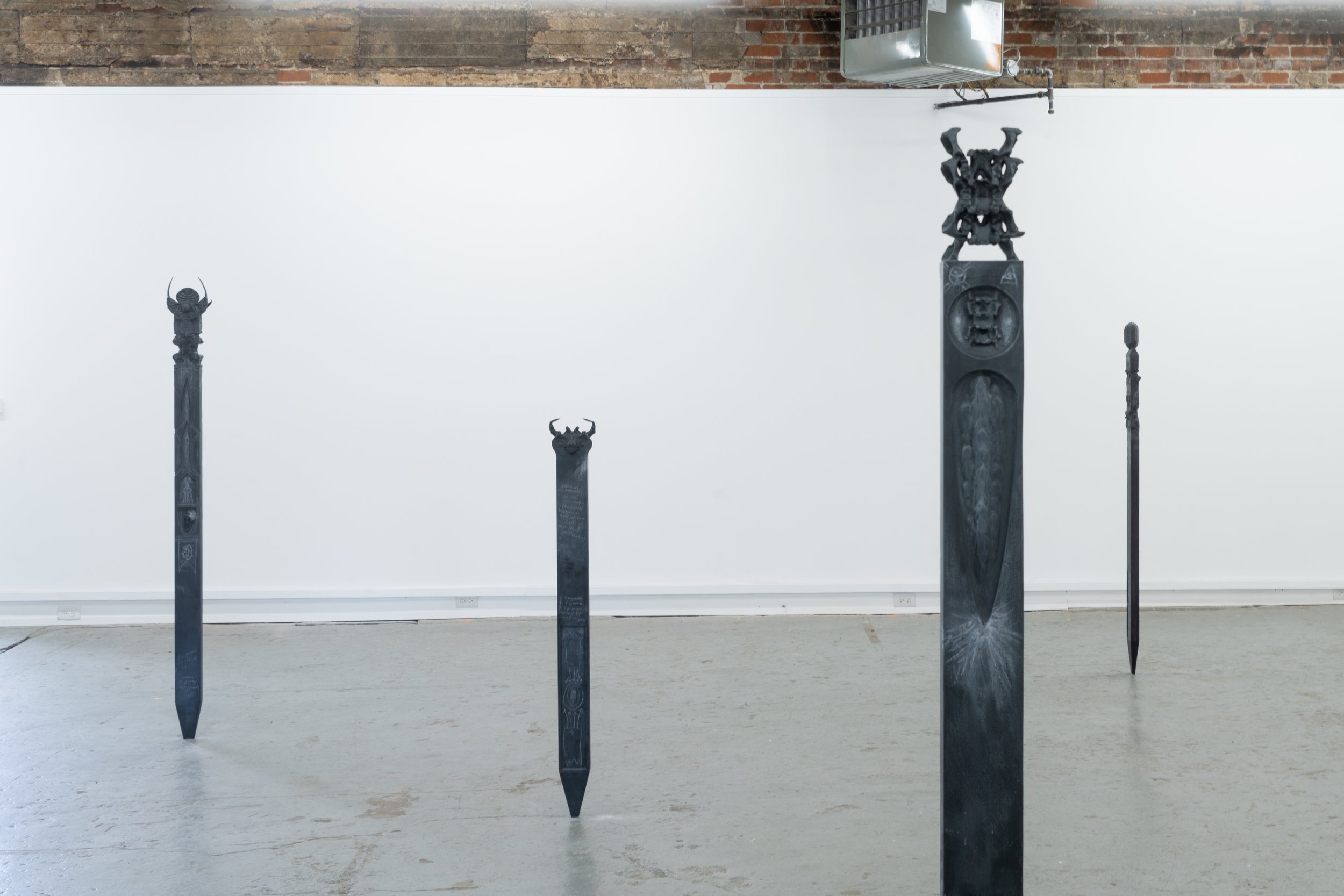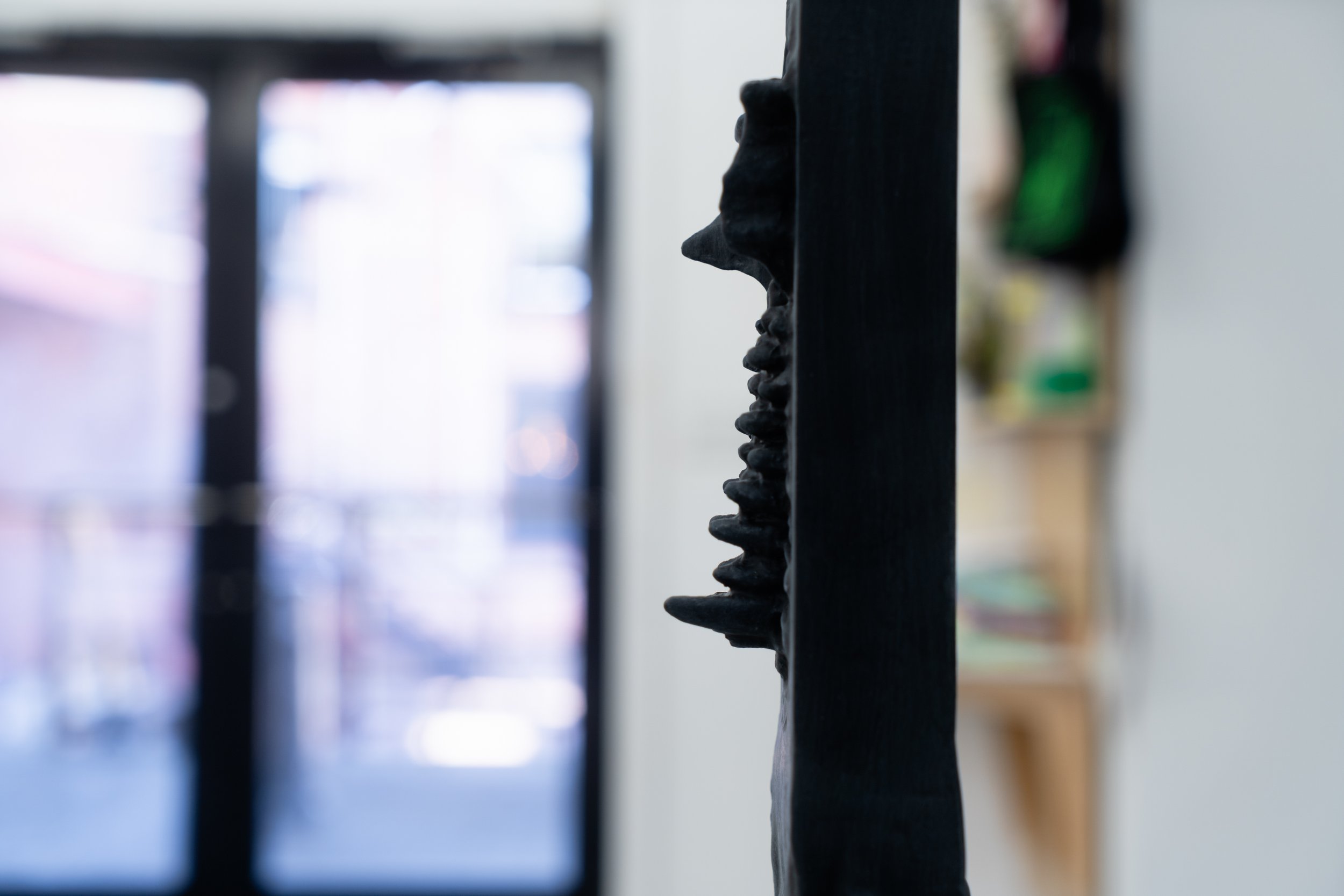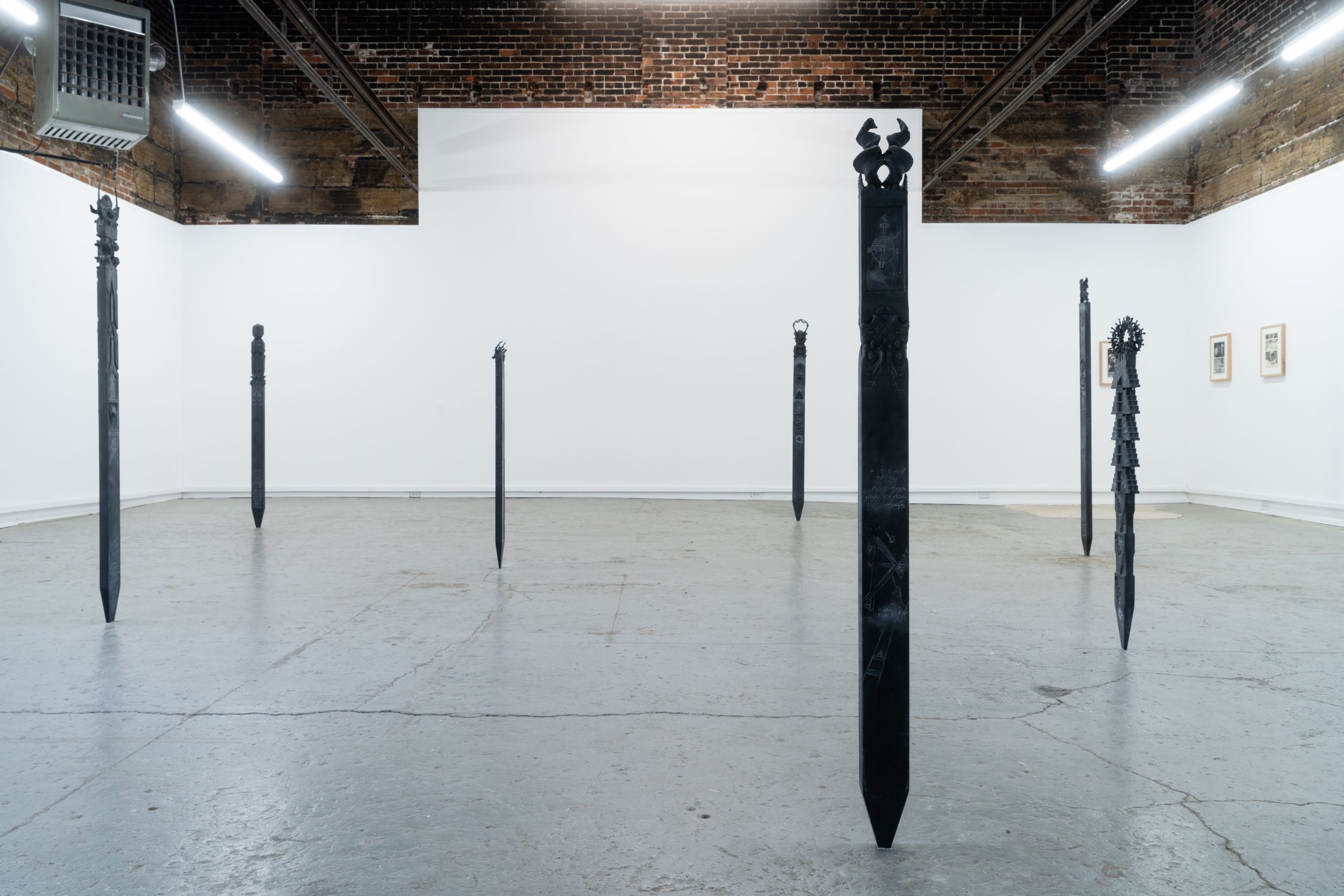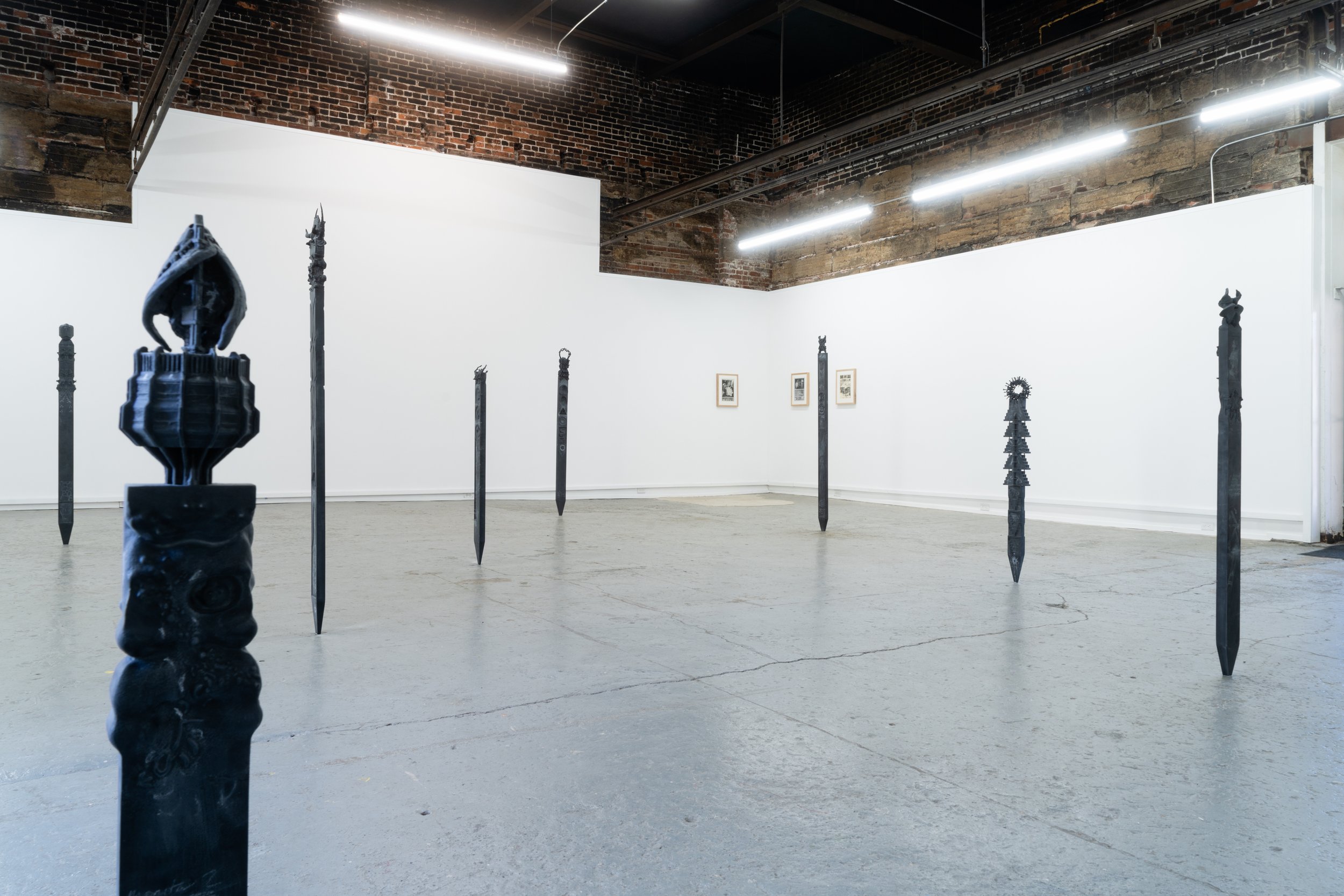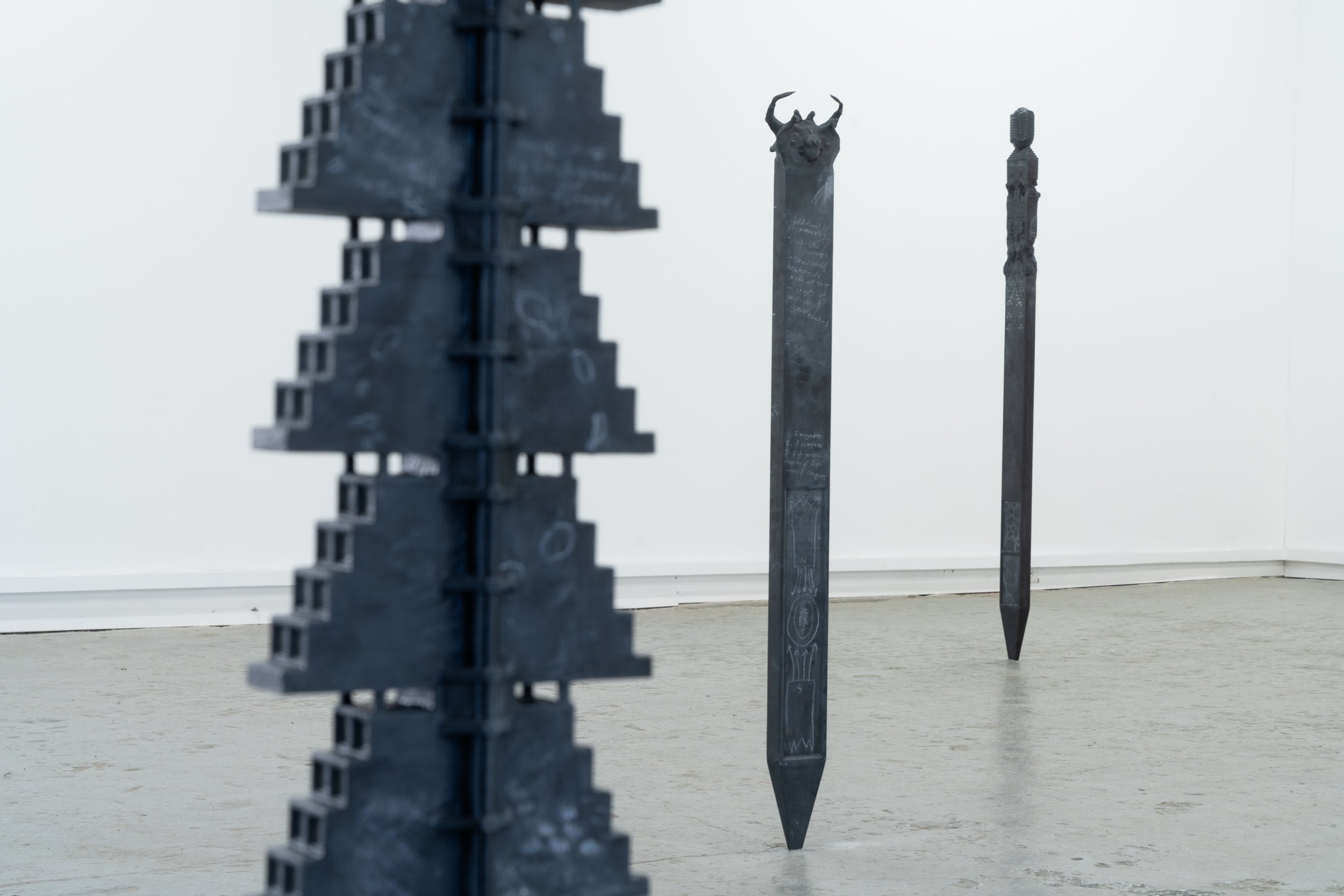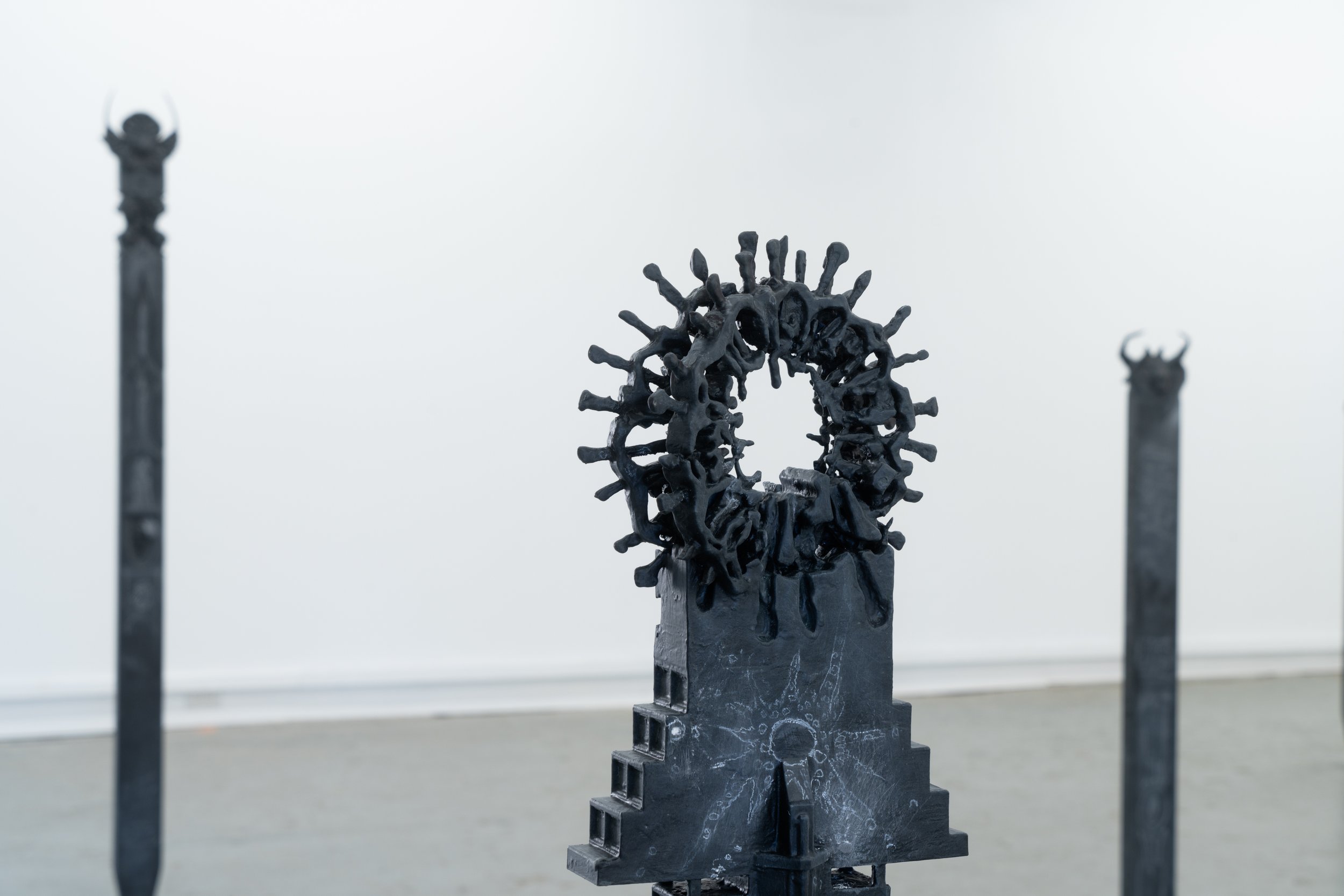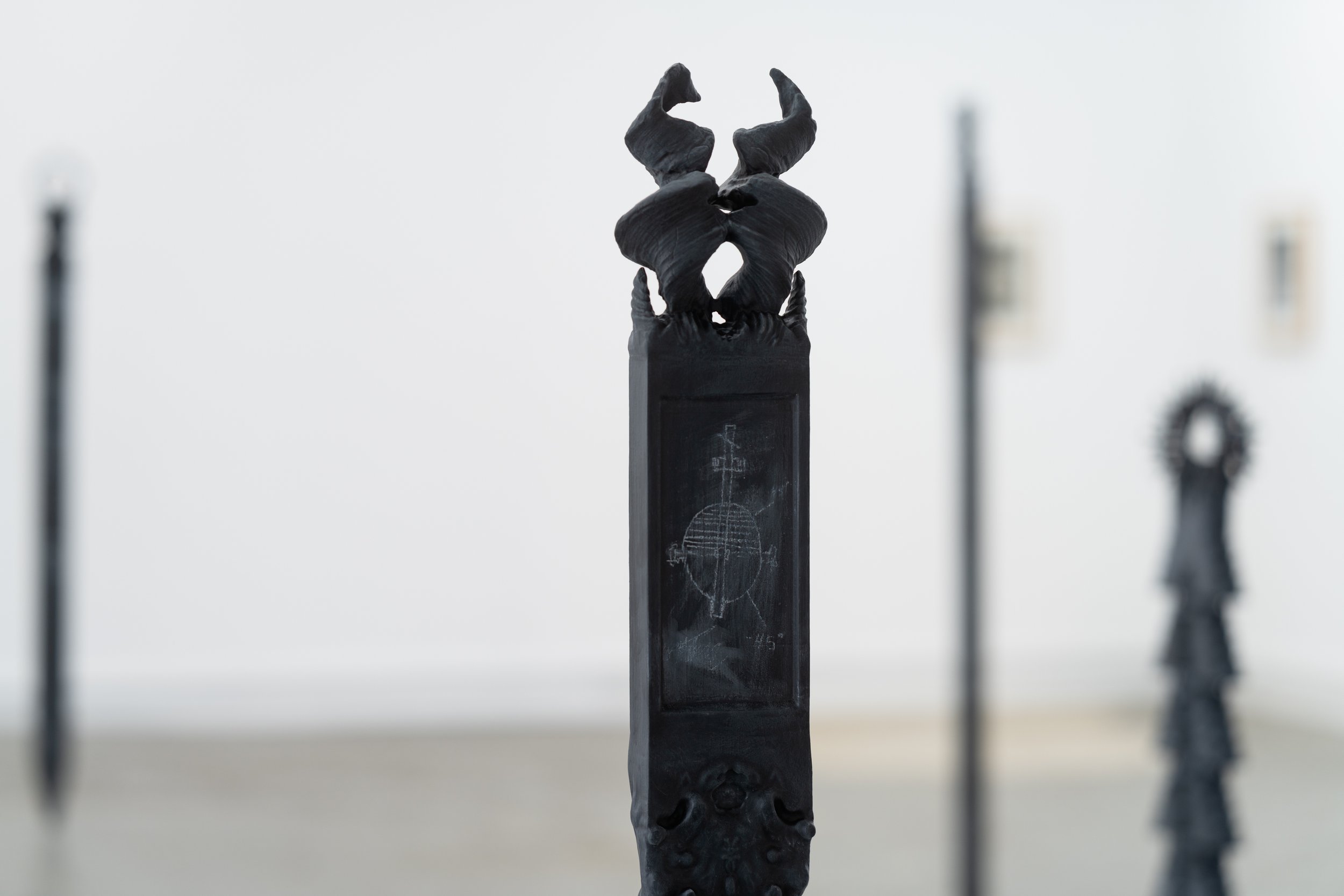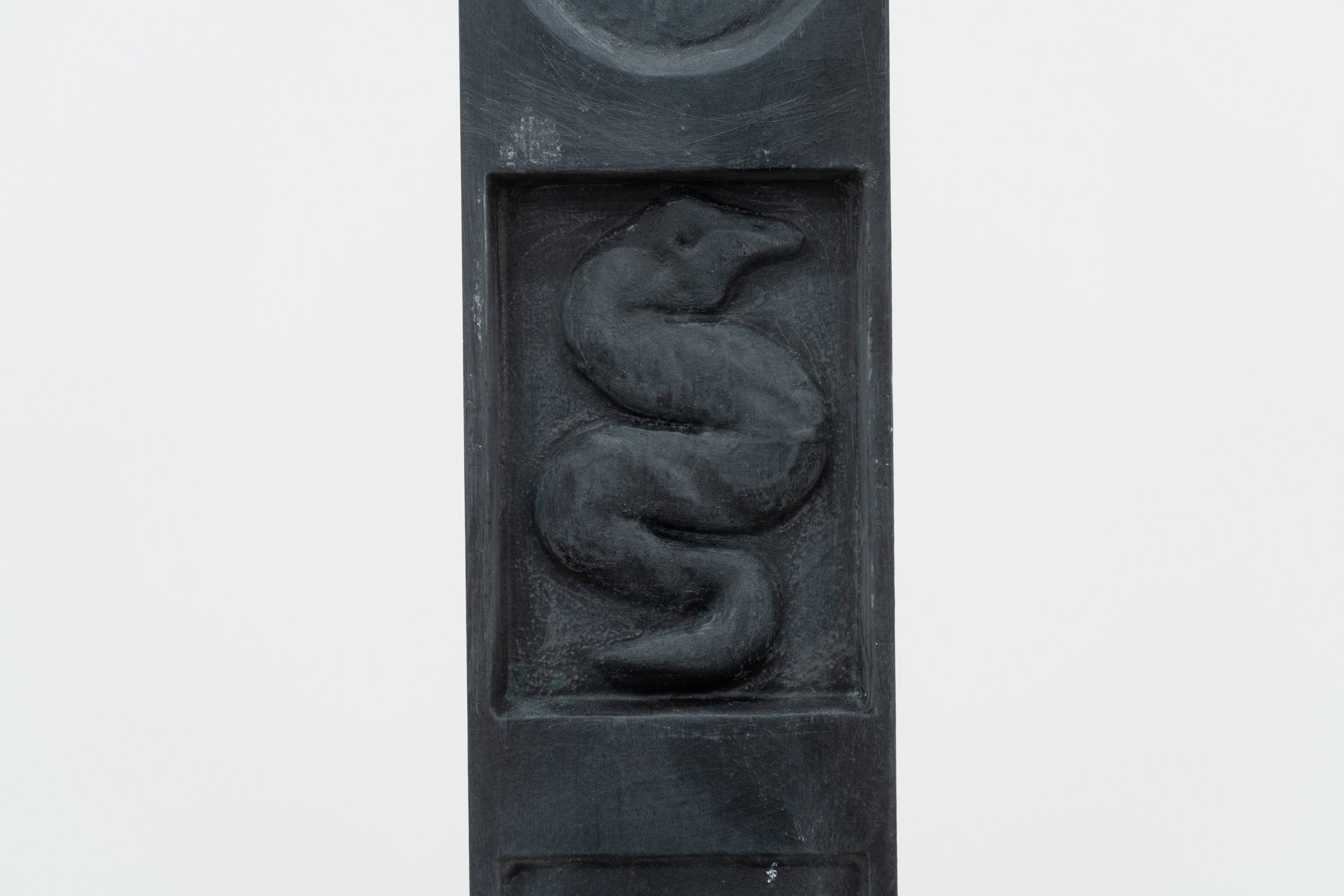Alex Boeschenstein: Silent Terminalia
04.12.2024 – 07.19.2024
Opening Reception: Friday, April 12, 7-10 PM
In the early Roman world, Terminalia festivals were held annually to celebrate the thresholds between adjoining properties. The boundary stones—frequently a centaur-like combination of a found rock for a base and the carved bust of the god Terminus for a top—around which these festivals took place, demarcated the meeting point of two zones of human dominion and control. In Silent Terminalia, Alex Boeschenstein’s uncanny works mark the speculative threshold between the human and the non-human, the known and the unknown, the everyday and the cosmically horrifying.
The installation Boundary Markers (2021-24) is a collection of freestanding obelisks fabricated out of pine, MDF, steel, and plastic, created through a combination of hand carving, 3D printing, and CNC-routing techniques. Their shapes, derived in part from CT scans of paleontological specimens that went extinct during the End-Permian event, are assembled into architectonic and totemic monoliths. Covered in chalkboard scribblings to degrade the apparent unity of their monumentality, any singular interpretation of them is upset, transforming them into instruments of (un)learning and (mis)teaching: malleable repositories for the intermingling of madness, expertise, and absence.
Three stone lithographs, Spectacle of the Void, Perpetual Broken Arrow, and Celestial Flesh (all 2023), are part of a series created while Boeschenstein was in residence at the Roswell Artist-in-Residence Foundation program. The drawings reference imagery from the archives of the Manhattan Project and other military testing sites in the American Southwest, as well as X-ray images of the interiors of nuclear triggers which eerily mirror witness descriptions of supposed UFO sightings in the area. Panels are combined to resemble a graphic novel, with no specific narrative imposed by the author.
On the wall opposite, a pair of found wooden pew ends hangs tombstone and tablet-like, a poem by Boeschenstein’s friend Spider Dailey scrawled across them, written in response to the artist’s lithograph, Spectacle of the Void.
In Eugene Thacker’s In the Dust of this Planet, the author argues that we are living in an increasingly unthinkable, non-human world. When we encounter encroachments of the non-human—manifest in global climate change, worldwide species extinction, deadly pandemics, etc.—we resort to crumbling knowledge systems that attempt to salvage the unthinkable into our human-centric worldview. Thacker contends that horror, both as a genre and as a way of making the enigmatic thought of the unknown and unknowable its central concern, may point to an alternative strategy. If approximately ninety percent of cells in the human body come from non-human organisms, then why shouldn’t thought, too, pass into the non-human? This challenging question is central to Alex Boeschenstein’s practice, engaging with the weird aspects of existence, the limits of thought.
About the Artist
Alex Boeschenstein (b. 1988, Cleveland, OH), is an interdisciplinary artist based in Austin, TX. He received a BA in Interdisciplinary Visual Art at the University of Washington in 2015 and an MFA in Transmedia and Print at the University of Texas in 2022. Recent solo exhibitions include Visionary Rumor at the Roswell Museum in Roswell, NM, and Too Many Cunning Passages at Glass Box Gallery in Seattle, WA. He has exhibited work nationally at the Visual Arts Center in Austin, Texas, and Gallery 4Culture in Seattle, WA, among others. Alex has received numerous accolades, including the Milnor Roberts Merit Scholarship through the University of Washington, the Centrum Emerging Artist Residency in Fort Worden, WA, and the M.K. Hage Endowed Scholarship in Fine Arts through the University of Texas, Austin. Public collections featuring his work include the University of Washington Print Collection and the University of Washington Life Sciences Building.
